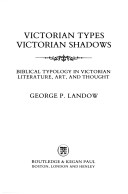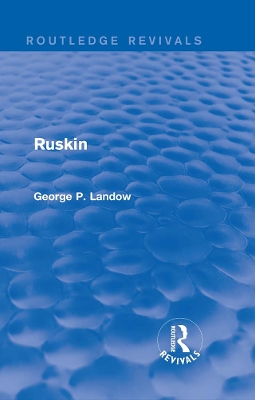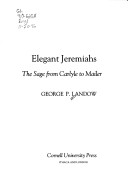Routledge Revivals
4 total works
The importance of typology in the study of early modern literature has long been accepted, yet students of Victorian culture have paid little attention to it. First published in 1980, this study demonstrates how biblical typology, an apparently arcane interpretative mode, had profound effects on the secular culture of the Victorian age: its art, literature and thought. George Landow considers the way in which the average English believer learned to read their Bible in terms of the types and shadows of Christ, the various ways in which Victorian poetry and hymns employed certain imagery, and the use of typological symbolism in narrative poetry, prose fiction, dramatic monologue and non-fiction. In a concluding chapter, he investigates the particularly complex, and often ironic, combinations of typological image and typological structure.
Ruskin, the great Victorian critics of art and society, had an enormous influence on his age and our own. A highly successful propagandist for the arts, he did much both to popularize high art and to bring it to the masses. A brilliant theorist and practical critics of realism, he also produced the finest nineteenth-century discussions of fantasy, the grotesque, and pictorial symbolism.
Most who have written about this outstanding Victorian polymath have approached him either as literary critics or as art historians. In this book, which was first published in 1985, George P. Landow provides a more balanced view and offers a strikingly new approach which reveals that Ruskin wrote throughout his career as an interpreter, an exegete. His interpretations covered many fields of human experience and endeavour, not only paintings, poems, and buildings but also contemporary social issues, such as the discontent of the working classes.
Labelled "an elegant Jeremiah" by a journalist of his day, the urbane Victorian Matthew Arnold must have received the comparison with the Old Testament prophet uneasily. Writing in the 1970s, Norman Mailer seems to owe nothing to the biblical for his description of a long hot wait to buy a cold drink while reporting on the first voyage to the moon. Yet both Arnold and Mailer, George P. Landow asserts in this book, are sages, writers in the nonfiction prose form of secular prophecy, a genre richly influenced by the episodic structures and harshly critical attitudes toward society which characterize Old Testament prophetic literature.
In this book, first published in 1986, Landow defines the genre by exploring its rhetoric, an approach that enables him to illuminate the relationships among representative works of the nineteenth century to one another, to biblical, oratorical, and homiletic traditions, and to such twentieth-century writers as Lawrence, Didion, and Mailer.
William Holman Hunt and Typological Symbolism (Routledge Revivals)
by George P. Landow
In this study, first published in 1979, Landow contends that Hunt’s version of Pre-Raphaelitism concerned itself primarily with an elaborate system of painterly symbolism rather than with a photographic realism as has been usually supposed. Like Ruskin, Hunt believed that a symbolism based on scriptural typology – the method of finding anticipations of Christ in Hebrew history – could produce an ideal art that would solve the problems of Victorian painting. According to Hunt, this elaborate symbolism could simultaneously avoid the dangers of materialism inherent in a realistic style, the dead conventionalism of academic art, and the sentimentality of much contemporary painting.
George Landow examines Hunt’s work in the context of this argument and, drawing on much unknown or previously inaccessible material, shows how he used texts, frames, and symbols to create a complex art of mediation that became increasingly visionary as the artist grew older. This book is ideal for students of art history.



